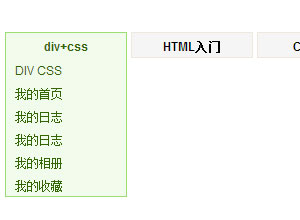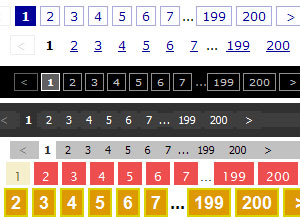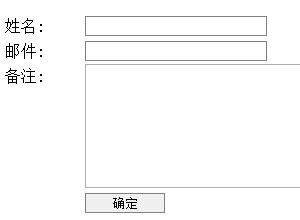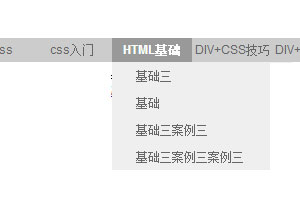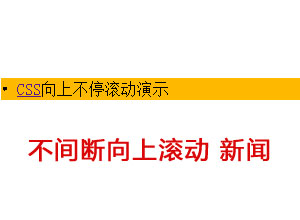一、什么是 Vue
Vue 是一个用于构建用户界面的渐进式的js框架,Vue 的核心是MVVM双向数据绑定模式及组件化开发,它使得开发前端不仅易于上手,还便于与Vue的优良生态或既有项目整合。
二、快速开始
1.在页面引入vue的js文件即可。
注意:cdn是一种加速策略,能够快速的提供js文件
<script src=""></script>
2.在页面中绑定vue元素
创建一个div,id是app<div id="app"></div>
3.创建vue对象,设计对象的内容
其中该vue对象,绑定了页面中id是app的那个div
<script>new Vue({el:"#app",data:{title:"hello vue!", args1:"hi!", age:18, flag:true}});</script>
4.在页面的元素中使用插值表达式来使用vue对象中的内容
<div id="app">{{ title }}</div>
三、 插值表达式
插值表达式的作用是在View中获得Model中的内容
1.插值表达式
<div id="app">{{title}}{{[1,2,3,4][2]}}{{ {"name":"xiaoyu","age":20}.age }}{{ sayHello()}}
new Vue({el:"#app",data:{title:"hello world!"},methods:{sayHello:function(){return "hello vue";}}});
2.MVVM双向数据绑定:v-model
<div id="app">{{title}}{{[1,2,3,4][2]}}{{ {"name":"xiaoyu","age":20}.age }}{{ sayHello()}}<input type="text" v-model="title" /></div>
3.事件绑定: v-on
<input type="text" v-on:input="changeTitle" />
v-on叫绑定事件,事件是input,响应行为是changeTitle。也就是说,当input元素发生输入事件时,就会调用vue里定义的changeTitle方法
new Vue({el:"#app",data:{title:"hello world!"},methods:{sayHello:function(){return "hello vue";},changeTitle:function(){console.log("ct");//往日志里写}}});
event.target.value==当前事件的对象(input元素)的value值注意:此时的this指的是当前vue对象。
所以:如果在method里要想使用当前vue对象中的data里的内容,必须加上this.
changeTitle:function(event){this.title=event.target.value;}
4.事件绑定简化版:使用@替换v-on:
<input type="text" @input="changeTitle" />
5.属性绑定: v-bind
html里的所有属性,都不能使用插值表达式
<a href="{{link}}">baidu</a>new Vue({el:"#app",data:{title:"hello world!",link:"" }, ...
上面的这种做法是错误的,可以使用绑定属性绑定来解决:
要想在html的元素中的属性使用vue对象中的内容,那么得用v-bind进行属性绑定
<a v-bind:href="link">baidu</a>可以缩写成 冒号<a :href="link">baidu</a>
6.v-once指令
指明此元素的数据只出现一次,数据内容的修改不影响此元素
<p v-once>{{titile}}</p>
7.v-html
就好比是innerHTML
<p v-html="finishedlink"></p>
new Vue({el:"#app",data:{title:"hello world!", link:"",finishedlink:"<a href=''>百度</a>"}, ...
8.v-text
纯文本输出内容
<p v-text="finishedlink"></p>
四、事件
1.事件绑定范例
范例一:
<div id="app"><button type="button" v-on:click="increase">click</button><p>{{counter}}</p>
new Vue({el:"#app",data:{counter:0 },methods:{increase:function(){this.counter++;},...
范例二:
<p v-on:mousemove="mo">mooooooo</p>
mo:function(event){console.log(event);}
范例三:
<p v-on:mousemove="mo">mx:{{x}}my:{{y}}</p>
new Vue({el:"#app",data:{counter:0,x:0,y:0,},methods:{increase:function(){this.counter++;},mo:function(event){this.x=event.clientX,this.y=event.clientY}} });
2.参数传递
<button type="button" v-on:click="increase(2)">click</button>
... methods:{increase:function(step){this.counter+=step;},...
传多个参数:
<button type="button" v-on:click="increase(2,event)">click</button>
...methods:{increase:function(step,event){this.counter+=step;},...
3.停止鼠标事件
<p v-on:mousemove="mo">mx:{{x}}my:{{y}}---<span v-on:mousemove="dummy">停止鼠标事件</span></p>
dummy:function(event){event.stopPropagation();}
另一种方式:
<span v-on:mousemove.stop>停止鼠标事件</span>
4.事件修饰符
输入回车键时提示
<input type="text" v-on:keyup.enter="alertE"/>
输入空格时提示
<input type="text" v-on:keyup.space="alertE"/>
五、vue改变内容 虚拟dom和diff算法
1.插值表达式的方式
范例一:
{{ count>10?"大于10","小于10"}}
范例二:
<p>{{result}}</p>
new Vue({el:"#app",data:{counter:0,result:""},methods:{increase:function(step){this.counter+=step;this.result=this.counter>10?"大于10":"小于10"},}});
2.computed的用法
<div id="app"><button type="button" v-on:click="increase(2)">click</button><p>{{counter}}{{counter>10?"大于10":"小于10"}}</p><p>result:{{result}}</p><p>getResult:{{ getResult() }}</p><p>getResultComputed:{{ getResultComputed}}</p></div>
<script>new Vue({el:"#app",data:{counter:0,result:""},methods:{increase:function(step){this.counter+=step;this.result=this.counter>10?"大于10":"小于10"},getResult:function(){return this.counter>10?"大于10":"小于10"}},computed:{getResultComputed:function(){return this.counter>10?"大于10":"小于10"}}});</script>
computed的函数第一次调用后会被加入到内存中。
computed内的函数使用时不用带小括号
computed的函数指的是被动调用,method是主动去触发他里面的函数,computed指的是你去使用这个函数
computed是一个属性计算函数,比如用来计算div的宽度和高度,div的宽度和高度一直在变,但computed中的该函数本身没有变,所以可以把函数写在computed中。
3.watch的用法:监控
watch用于监控参数的变化,并调用函数,newVal是能获得参数新的值,oldVal是参数老的值。
new Vue({el:"#app",data:{counter:0,result:""},methods:{increase:function(step){this.counter+=step;//this.result=this.counter>10?"大于10":"小于10"},getResult:function(){return this.counter>10?"大于10":"小于10"}},computed:{getResultComputed:function(){return this.counter>10?"大于10":"小于10"}},watch:{counter:function(newVal,oldVal){this.result=newVal>10?"大于10":"小于10"}}});
watch的高端用法:一秒后让count归为0,体现了vue的双向绑定
watch:{
counter:function(newVal,oldVal){
this.result=newVal>10?"大于10":"小于10";
var vm=this;//当前data
setTimeout(function(){
vm.counter=0;
},1000);
}
}
六、vue改变样式
1.class的动态绑定
v-bind:class="{red:attachRed}"
键名是类名,键值是布尔,如果是true,则将指定的类名绑定在元素上,如果是false,则不绑定。
<head><meta charset="UTF-8"><title>下午</title><style>.demo{width:100px;height:100px;background-color:gray;display:inline-block;margin:10px;}.red{background-color: red;}.green{background-color: green;}.blue{background-color: blue;}</style></head><body><div id="app">{{attachRed}}<div class="demo" @click="attachRed=!attachRed" v-bind:class="{red:attachRed}"> </div><div class="demo"></div><div class="demo"></div></div><script src=""></script><script>new Vue({el:"#app",data:{attachRed:false}});</script></body>
2.加入computed
<div class="demo" :class="divClasses"></div>
new Vue({el:"#app",data:{attachRed:false},computed:{divClasses:function(){return {//返回一个json对象red:this.attachRed,blue:!this.attachRed}}}});
3.双向绑定的体现
在input中输入颜色,就可以设置div的class
<div id="app"><input type="text" v-model="color"/>{{attachRed}}<div class="demo" @click="attachRed=!attachRed" v-bind:class="{red:attachRed}"></div><div class="demo"></div><div class="demo" :class="divClasses"></div><div class="demo" :class="color"></div></div><script>new Vue({el:"#app",data:{attachRed:false,color:"green"}, ...
4.多个样式的操作
.red{background-color: red;color: white;}<div class="demo" :class="[color,{red:attachRed}]">hahaha</div>
5.通过style设置样式
<div class="demo" :style="{backgroundColor:color}"></div>
设置div的style属性的值,style里放json对象,键是驼峰式写法,值是变量color
6.使用computed设置样式
<div class="demo" :style="myStyle"></div><input type="text" v-model="width"/>new Vue({el:"#app",data:{attachRed:false,color:"green",width:100},computed:{divClasses:function(){return {//返回一个json对象red:this.attachRed,blue:!this.attachRed}},myStyle:function(){return {backgroundColor:this.color,width:this.width+"px"}}}});</script>
7.设置style属性的多个样式
<div class="demo" :style="[myStyle,{height:width*2+'px'}]"></div>
七、vue中的语句
1.分支语句
v-if
v-else-if
v-else
v-show: 实际上是让该元素的display属性为none,隐藏的效果。所以性能更好。
<div id="app"><p v-if="show">hahah</p><p v-else>hohoho</p><p v-show="show">hehehe</p><input type="button" @click="show=!show" value="dianwo"/></div><script src=""></script><script>new Vue({el:"#app",data:{show:false}});</script>
通过模板标签对多个元素进行同一的if和else管理
<template v-if="show"><h1>heading</h1><p>inside text</p></template>
2.循环语句
vue中只有for循环
<body><div id="app"><ul><li v-for="str in args">{{str}}</li></ul></div><script src=""></script><script>new Vue({el:"#app",data:{args:["a","b","c","d"]}});</script></body>
改进版:for语句里,key建议加上,作为标识.i是下标
<ul><li v-for="(str,i) in args" :key="i">{{str}}{{i}}</li></ul>
使用templete实现循环
<template v-for="(str,i) in args":key="i"><p>{{str}}{{i}}</p></template>
循环中操作对象
<template v-for="person in persons"><p><span v-for="value in person">{{value}}</span></p><p><span v-for="(v,k,i) in person">{{k}}:{{v}}:{{i}}====</span></p></template><script>new Vue({el:"#app",data:{args:["a","b","c","d"],persons:[{name:"xy",age:20,color:"red"},{name:"yh",age:18,color:"green"}]}});</script>
循环的另一种用法:
v-for="n in 10" //可以在分页组件中使用
<nav> <ul class="pagination"> <li> <a href="#" aria-label="Previous"> <span aria-hidden="true">?</span> </a> </li> <!--======v-for====--> <li v-for="n in 10"><a href="#">{{n}}</a></li> <li> <a href="#" aria-label="Next"> <span aria-hidden="true">?</span> </a> </li> </ul></nav>
八、总结
vue是以数据为驱动,渐进式的web框架,MVVM双向绑定,虚拟DOM为核心和diff算法,所谓的虚拟dom和diff算法,是指当页面内容发生变化时,只更新改变的部分,是通过虚拟dom和diff算法实现这样的操作,效率非常高。
如需转载,请注明文章出处和来源网址:http://www.divcss5.com/html/h60305.shtml


